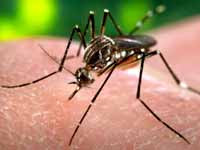
This article was written 5 months ago and at that time, many had commented, it was just a prediction without any strong proof....well, you are now able to make comparison of the events that has happened in the last few months with this 5 months old report.
September 24, 2007
La Nina threatens to wreck world’s weather
Experts predict a run of severe weather in the coming months, with devastating floods striking some parts of the world while severe droughts afflict other regions, as the climate phenomenon known as La Niña gathers momentum.
A chronic drought afflicting southern California and many southeastern states of America could be exacerbated, with Los Angeles heading for its driest year on record. In contrast, western Canada and the northwestern US could turn colder and snowier. Mozambique, southeast Africa, and northern Brazil may face exceptionally heavy rains and floods, while southern Brazil and much of Argentina suffer drought.
La Nina could even rearrange the pattern of sea ice around the Antarctic, pushing the ice pack towards the Pacific side of the continent. Already, torrential rains have triggered severe floods across a huge swath of Central Africa, stretching from Senegal in the west to Uganda in the east.
Rupa Kumar Kolli, chief of world applications at the World Meteorological Organisation (WMO) in Geneva, predicts that the worst of La Niña is yet to come. “This La Nina is now in its developing phase and getting stronger, and we can expect it to peak this coming December and January,” he said. Whether this episode of La Niña will make itself felt in Britain and continental Europe this winter is not certain. “We tend to get a mild end to winter with La Niña, but it’s not a strong signal,” said Adam Scaife, at the Hadley Centre of the Met Office in Exeter.
Met Office scientists have found that La Niña is likely to have played a part in the abysmal British summer. By upsetting the usual track of the high-altitude jet stream towards Britain, it delivered barrages of slow-moving Atlantic depressions with torrents of rain. La Niña may also have been involved in the spectacular Asian monsoon this summer, leading to floods that killed about 1,000 people in India and Bangladesh. And it allows hurricanes to develop - already this month the Caribbean and the Gulf of Mexico have experienced two monstrous Category 5 storms. Another hurricane broke the record for the fastest intensification of a storm.
La Nina occurs when the tropical seas of the Pacific off the coast of Latin America cool down, while the waters turn warmer towards Australia, the Philippines and Indonesia. That lurch in ocean temperatures can send weather systems into havoc over vast areas, delivering huge deluges of rain over the Far East and tropical Australia, while western parts of Latin America turn much drier than usual. This is the flip side of El Nino, although La Nina lasts for a shorter time, usually no more than a year.
The way that La Nina casts its spell over the globe, from the Pacific to the rest of the world, is known as a “tele-connection”. By disrupting sea temperatures, pressure systems and winds over the Pacific, it interferes with the atmospheric circulation around the tropics. This sends out waves in the atmosphere, like casting a stone into a pond, which can change the strength and position of jet stream winds several miles high. In this way the Pacific can have a huge impact on the weather far from the tropics.
Other pointers:-
The year 2007 has tied 1998 for the Earth’s second warmest this century, NASA scientists announced.
First snow for 100 years falls on Baghdad
BAGHDAD (AFP) - Light snow fell in Baghdad early on Friday in what weather officials said was the first time in about a 100 years
Climate change may wipe some Indonesian islands off map
JAKARTA (Reuters) - Many of Indonesia's islands may be swallowed up by the sea if world leaders fail to find a way to halt rising sea levels at this week's climate change conference on the resort island of Bali.
Natural disasters have quadrupled in two decades
LONDON (AFP) - More than four times the number of natural disasters are occurring now than did two decades ago, British charity Oxfam said in a study Sunday that largely blamed global warming.
Groundwater lost to rising sea levels greater than thought
CHICAGO (AFP) - Rising sea levels could swallow up to 40 percent more potable groundwater than previously thought because of tricks of topography, a new study has found.
Many current predictions about the impact of global warming look at how much land would be lost to rising sea levels.But researchers at Ohio State University have found that in many coastal regions sea water will leach into the water table and contaminate groundwater well beyond the shoreline.
Let's Go GREEN!

Other Related Article On The Blog
a) La Nina or Global Warming?
b) China Faces Worst Winter in 50 Years
c) Trail of Devastation -Killer Tornadoes
d) We are Not Going To Make It




